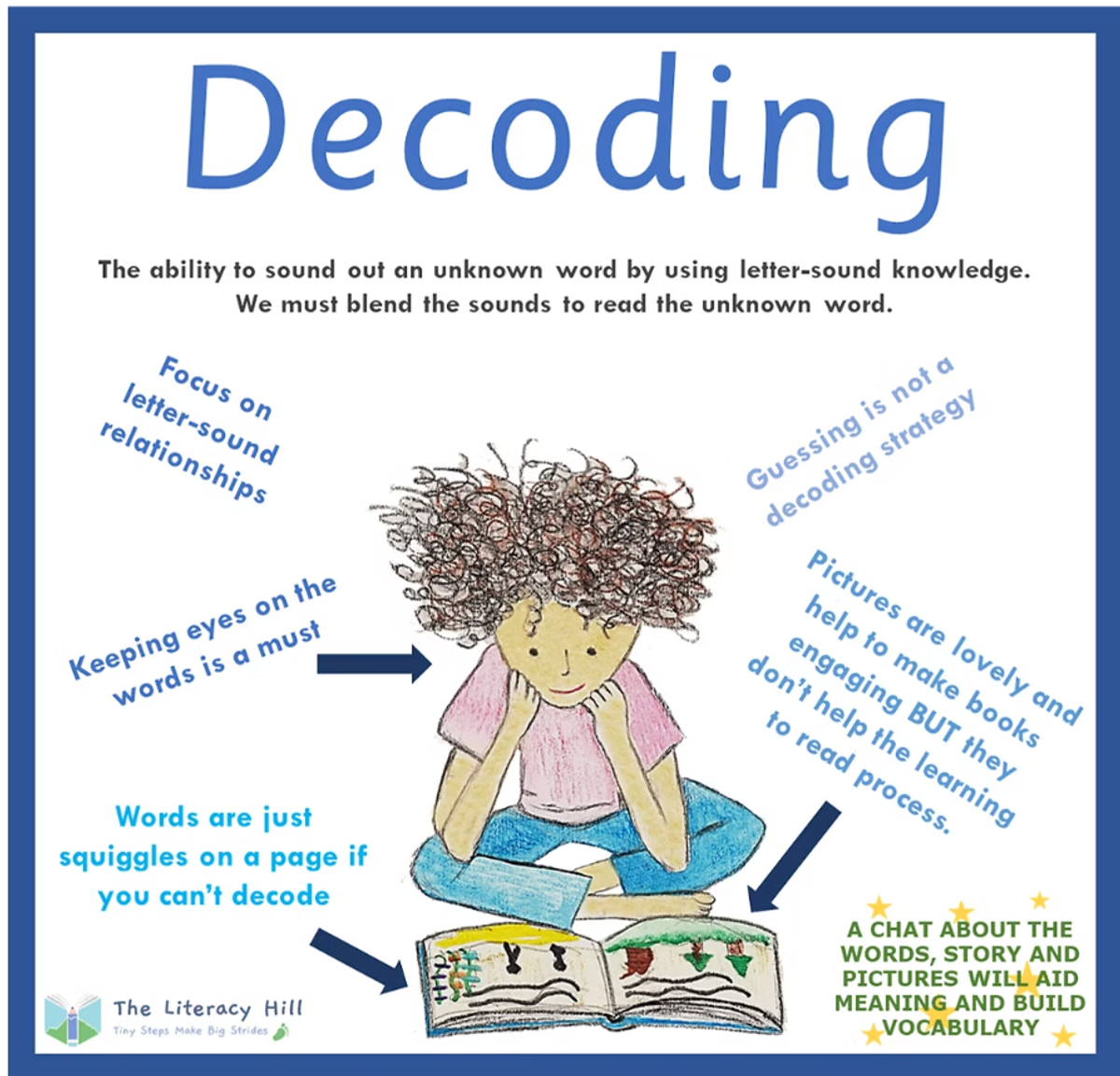Literacy News
Naomi Glasby
(Literacy Leader)

Literacy News
Naomi Glasby
(Literacy Leader)
Dear Parents,
As your child embarks on the exciting journey of learning to read, you may hear their teacher mention "decodable texts." Understanding what these texts are and why we use them is key to supporting your child's reading success.
What is a Decodable Text?


The evidence to support the use of decodable texts with early readers is extremely strong and they are now a permanent feature in our Victorian Curriculum. Decodable texts are specifically written for beginning readers as they are developing their blending and segmenting skills and their knowledge of the alphabetic code. Decodable texts contain a very large percentage of words that incorporate the letter-sound relationships that students have been taught in class and they increase in complexity as the students learn more of the phonetic code. The vocabulary in them is highly controlled so students are not exposed to too many words that they cannot yet sound out. They are not a regular storybook, they fulfill a very different and specific purpose. Instead, they are a practice tool, like training wheels for a bicycle, designed to help children apply their new phonics skills immediately. For example, if your child has only been taught the sounds for the letters 'a', 't', 'p', and 's', a decodable text might contain sentences like: "Pat sat. A cat sat. Pat sat at a tap."
The Purpose: Building Confident Readers
Decodable texts serve two critical purposes in the early stages of reading instruction:
1. To Practice and Apply Phonics Skills
Children learn to read by mastering the code; the relationship between letters and sounds (phonics). These books give them a controlled environment to apply this knowledge.
Without decodable texts, a child taught the 'sh' sound might pick up a book and encounter the word 'knight,' which they cannot decode yet, leading to frustration and guessing. With decodable texts, the words always contain sounds that have been explicitly taught in class. The child can use the exact skills they just learned to sound out the words, reinforcing the lesson and building mastery.
2. To Prevent Guessing
When children struggle with a word, their natural tendency is to guess based on the first letter or the picture. Decodable texts actively discourage this habit. Because almost every word can be sounded out, the child learns to rely on their knowledge of the letter-sound code (decoding) rather than visual memory or guessing. This develops a strong, systematic approach to reading.
We have introduced the use of decodable passages in classes this year at Mother Teresa and they will become a bigger part of home reading next year. By understanding and supporting the use of decodable texts, you are helping to lay a strong, foundational pathway to your child becoming a fluent and confident reader!
Best wishes,
Naomi Glasby